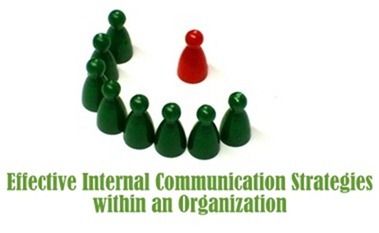A successful internal communication strategy engages employees, aligns goals, and boosts productivity. It brings people together, ensuring every project gets completed with the utmost effort and impeccable teamwork.
If you want better communication in the workplace, be sure to use these seven components of a successful internal communication strategy.
1: A Communication Platform
Many companies now communicate mainly online, especially those with many employees. It allows people to collaborate from anywhere and at any time. Choosing the right communication tools is a must, as you must ensure it is user-friendly and engaging for staff. Go to Simpplr if you want more information on the best internal communication practices.
2: Engaging Content
Content isn’t just for engaging customers – it’s also for engaging your staff. Use a clear, direct voice throughout the company to improve communication across the board. Engaging content helps with this. That includes email, video, images – any kind of content given to your staff during the workday.
3: Employee Recognition
Communication should not just come in the form of constructive criticism and explanations. Companies should also make the time to give employee recognition, so make this part of your internal communications strategy. You could reward staff for their hard work via email, during one-on-one meetings, or on a platform. Not only does this boost employee mood, but it also gives staff members a clear indication of what they’re doing right.
4: Clear Company Goals
It is difficult for staff to understand what the company expects without clear goals. By delivering clear goals to employees, communications become much easier. Staff members know what is expected of them and will act in a way that aligns with the company’s values.
5: Internal Communication Measurements
How will you improve your strategy if you don’t know how well it is doing? By measuring your internal communication efforts, you can determine whether or not they are having an impact and then change them accordingly. For example, if you track the log-in rate on a communication platform, you will quickly see whether or not staff are engaged with it. If few people are using the tool, it might be a sign that you need to introduce another platform. Or, you could implement better training to get everyone on board with the technology.
6: Open to Feedback
Communication opens when feedback is freely given back and forth. Don’t give unnecessary feedback or try to micromanage. Instead, create a two-way door that allows staff to give their two cents on matters, whether big or small.
7: Key Objectives
The best internal communication strategies have objectives in place. What do you wish to achieve? That could include:
- More employee feedback
- Better workplace meetings
- More engagement on platforms
- Improved project management
By knowing your goals when it comes to your communications strategy, you will have an easier time reaching them.
The right internal communication strategy will improve engagement from your employees. Use these seven components, and watch workplace communication soar and improve.





Be First to Comment